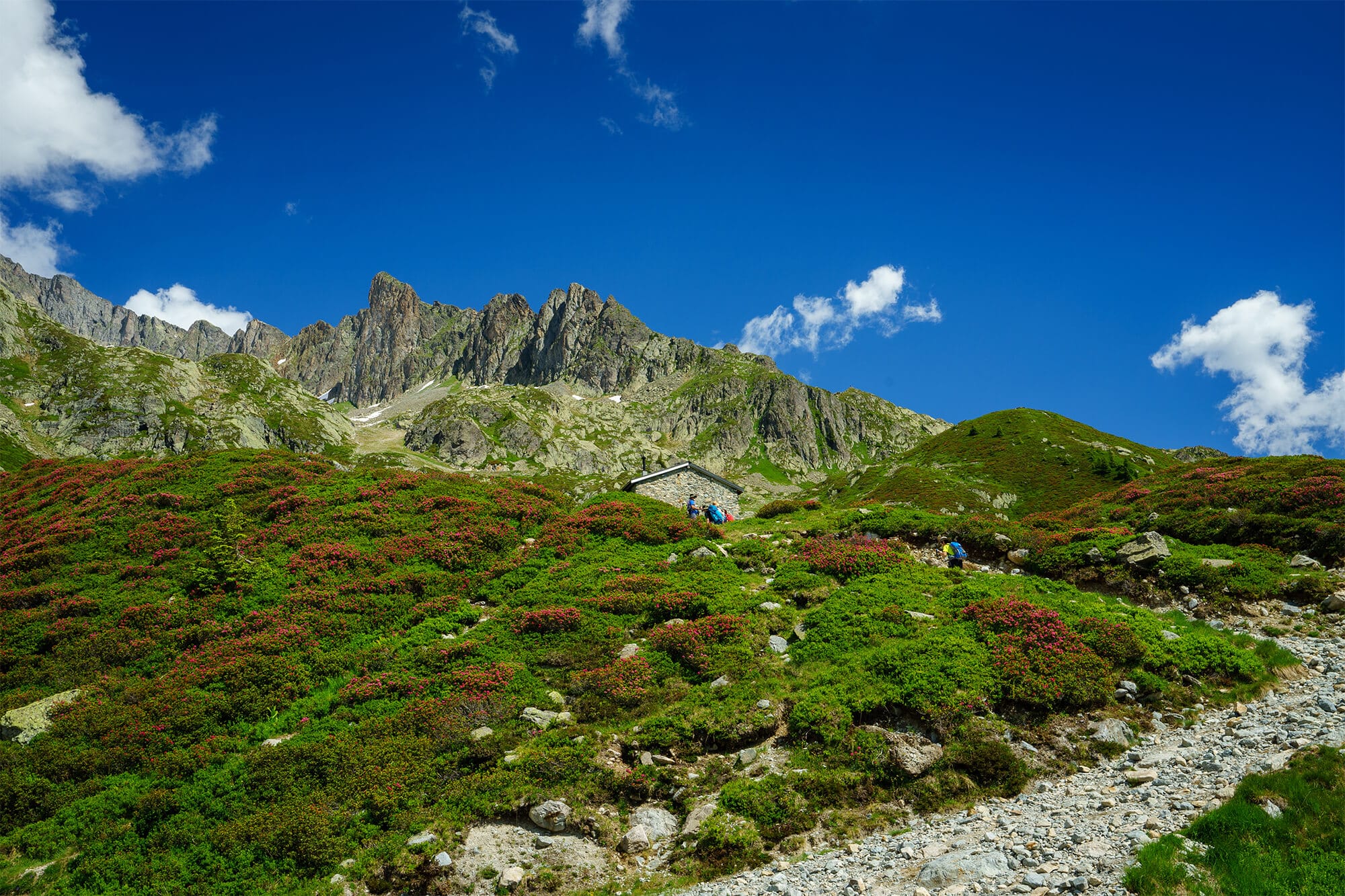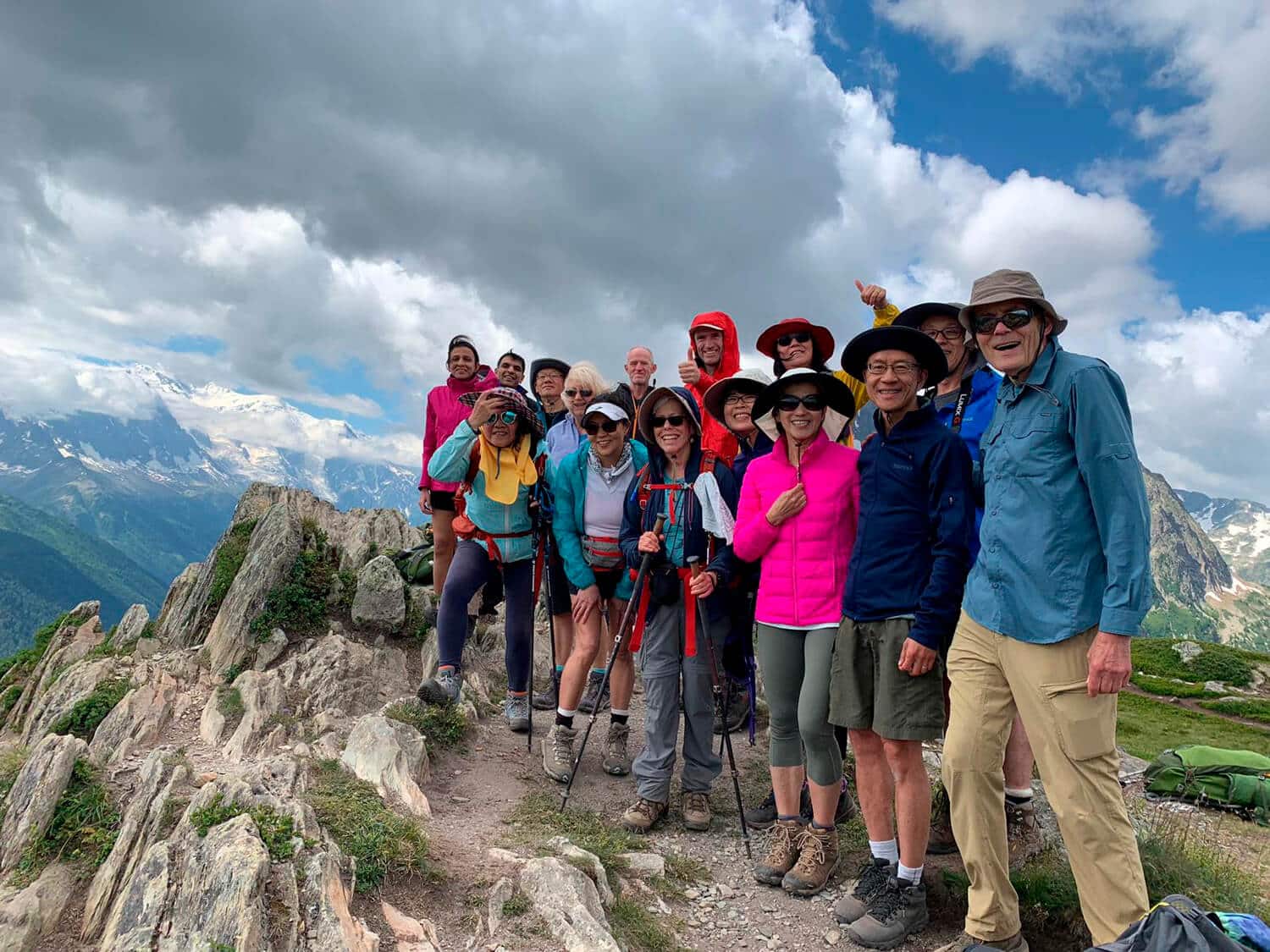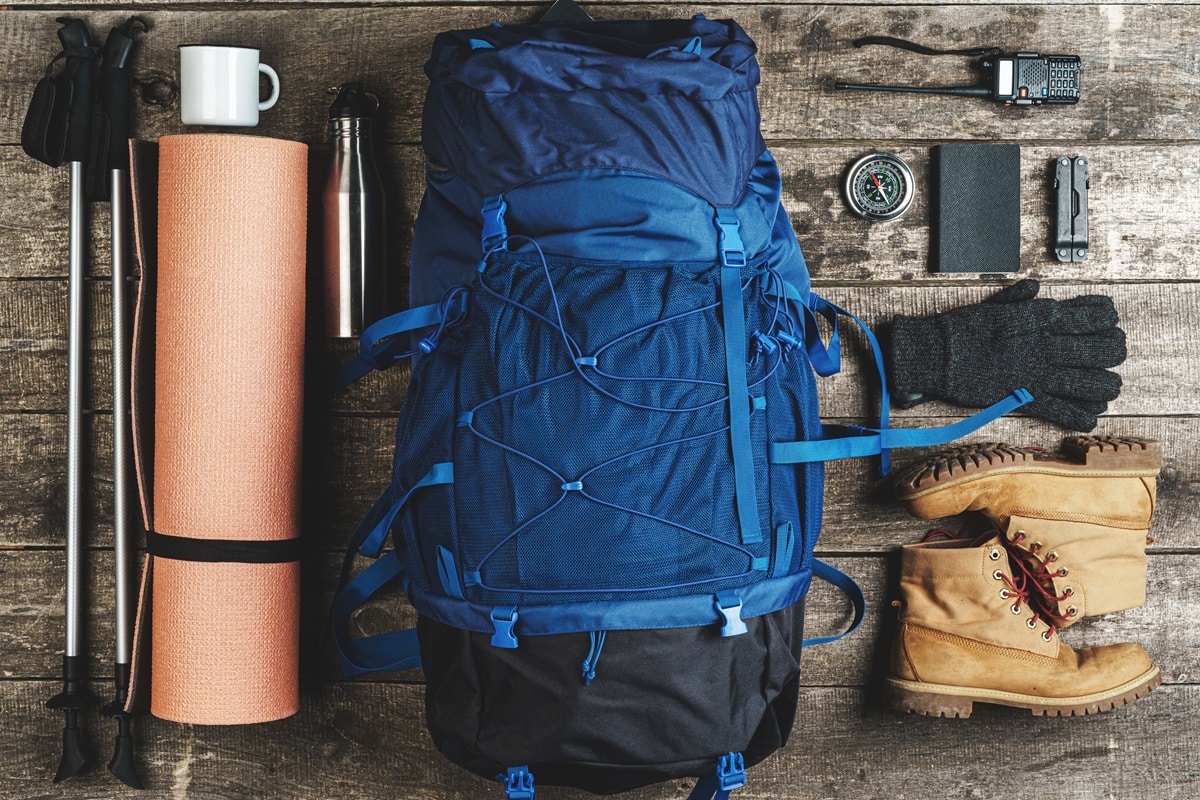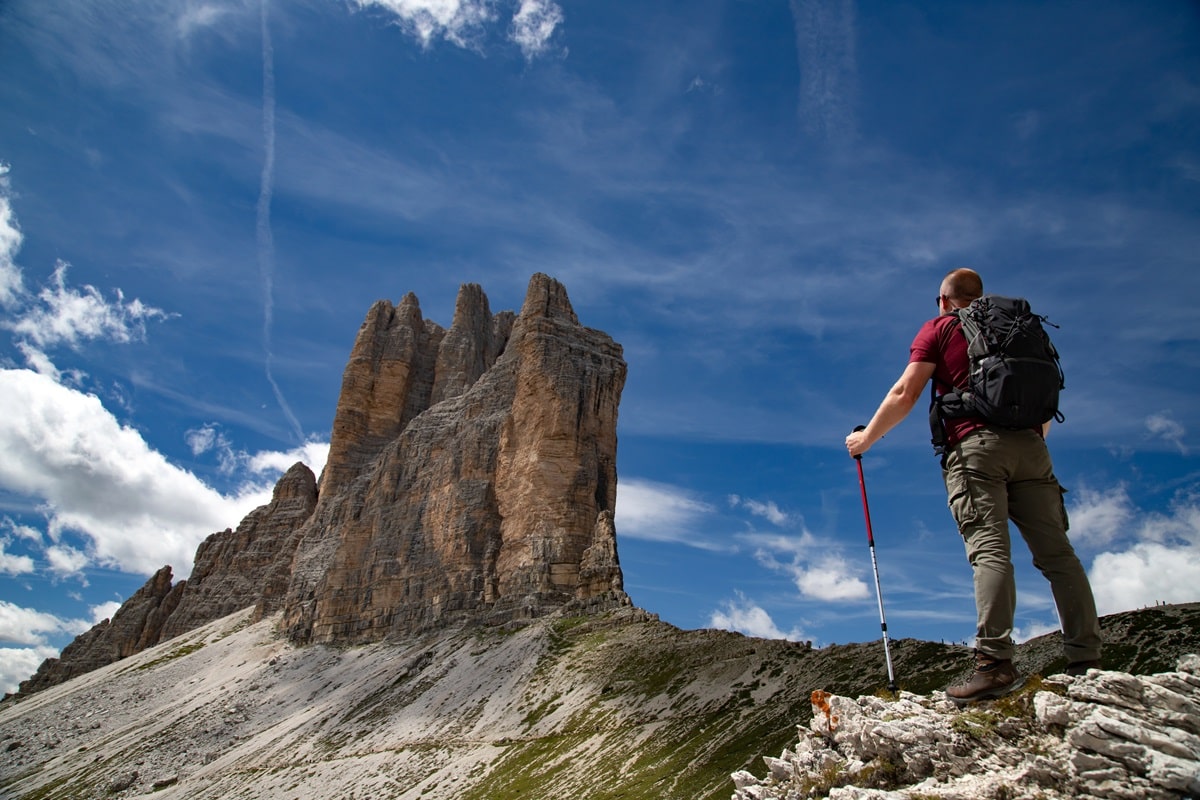What Types of Animals Inhabit the Alps During the Summer Months?
The Alps, a vast mountain range in Central Europe, are home to a diverse array of wildlife during the summer. Among the mammals, you can expect to see agile climbers like the Chamois and the Ibex, both adept at navigating the rugged terrain. Marmots, known for their sociable nature and loud whistles, are also common. Bird enthusiasts can look forward to spotting the majestic Golden Eagle and the Bearded Vulture, both of which play crucial roles in the ecosystem.
How Does the Changing Season Affect Wildlife Behaviour and Habitat?
As summer arrives, the melting snow and warmer temperatures transform the Alpine landscape, making it more hospitable for wildlife. Animals that hibernate, such as Marmots, emerge from their burrows, while others, like the Chamois and Ibex, move to higher altitudes to graze on fresh vegetation. Birds of prey, including the Golden Eagle, become more active, hunting for food to feed their young. The changing season also brings about unique behaviours, such as mating rituals and territorial displays.
Why Is Summer a Prime Time for Wildlife Spotting in the Alps?
Summer is an ideal time for wildlife spotting in the Alps due to the abundance of food and the favourable weather conditions. The longer daylight hours provide more opportunities to observe animals in their natural habitats. Additionally, the clear, warm days make it easier to access higher altitudes where many species reside. The vibrant flora, including wildflowers and alpine meadows, also attracts a variety of insects and smaller animals, creating a bustling ecosystem.
How Can Trekkers and Outdoor Enthusiasts Prepare for Wildlife Encounters?
To prepare for wildlife encounters in the Alps, trekkers should equip themselves with the right gear, including binoculars for spotting distant animals and appropriate clothing for varying weather conditions. It’s essential to carry a map and be aware of the best trails for wildlife viewing. Observing animals from a distance, staying quiet, and avoiding sudden movements can help minimise disturbance to the wildlife. Being informed about the local regulations and guidelines for wildlife observation ensures a respectful and safe experience for both visitors and animals.
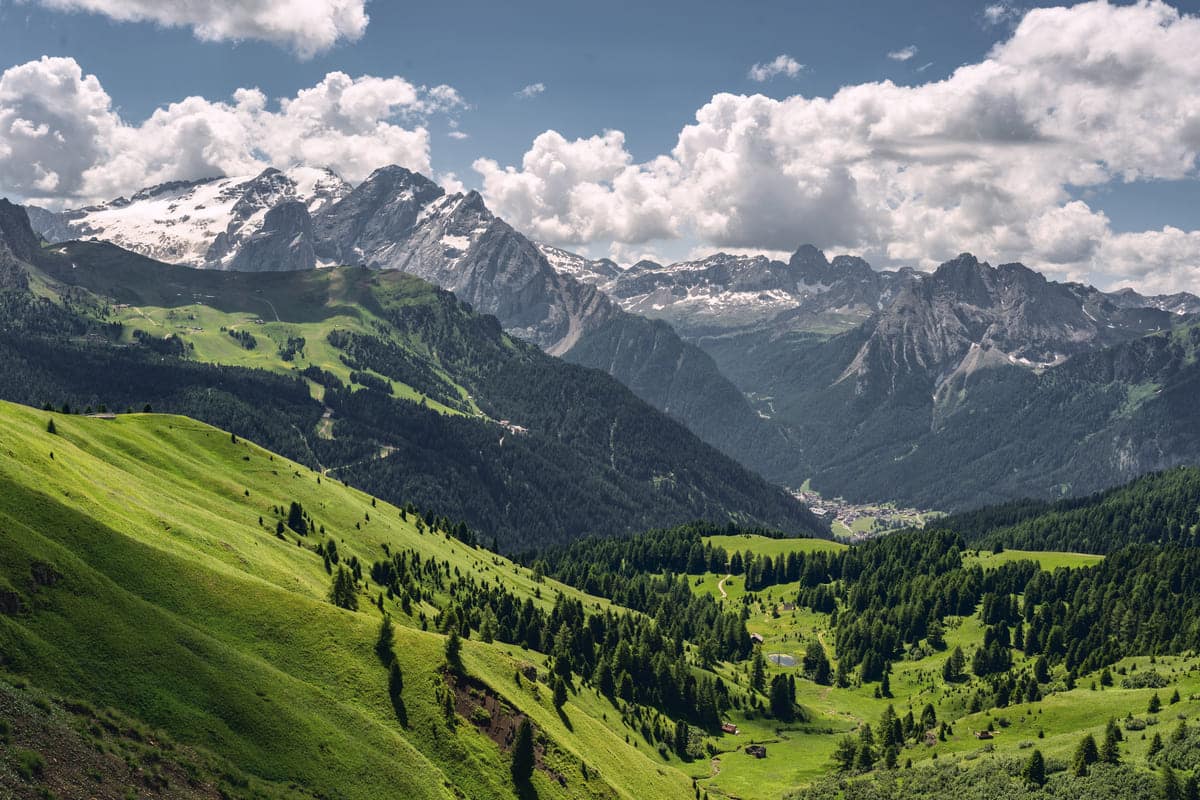
Iconic Mammals of the Alps: Chamois, Ibex, and Marmot
What Distinguishes the Chamois, Ibex, and Marmot from Other Alpine Wildlife?
The Alps are home to a variety of unique mammals, each with distinct characteristics. The Chamois, known for its agility, can navigate rugged terrain with ease. It has a white face with a brown stripe and short horns. The Ibex, notable for its large, ridged horns, is an excellent climber found at high altitudes. Marmots, on the other hand, are sociable ground squirrels that hibernate for up to nine months and are known for their loud whistles.
Where Are the Best Locations to Spot These Mammals in the Summer?
For those keen on spotting these iconic mammals, certain locations in the Alps offer higher chances. Chamonix and Zermatt are prime areas for observing Chamois and Ibex. Marmots are often seen in the meadows and lower slopes of these regions. National parks like Ecrins and Gran Paradiso also provide excellent opportunities for wildlife viewing.
How Do These Species Adapt to the Summer Climate in the Alps?
Adaptation is key for survival in the Alps. Chamois and Ibex thrive in high altitudes, where they find refuge from predators. Their climbing skills allow them to access food sources that are out of reach for other animals. Marmots build complex burrows to stay cool during the summer heat and feed in the mornings and evenings to avoid the midday sun.
What Conservation Efforts Are in Place to Protect These Iconic Alpine Mammals?
Conservation efforts are crucial for the protection of these species. Reintroduction programmes have been successful, particularly for the Ibex, which was reintroduced by Ecrins National Park. Protected areas and herd management strategies help maintain healthy populations. Ecological education initiatives also play a role in raising awareness about the importance of preserving these mammals and their habitats.
Birdwatching Highlights: Golden Eagles and Bearded Vultures
What Makes the Golden Eagle and Bearded Vulture Unique to the Alps?
The Golden Eagle and Bearded Vulture are two of the most captivating raptors found in the Alps. The Golden Eagle is renowned for its agility and speed, with powerful talons that make it a formidable predator. It preys on hares, rabbits, and marmots, and can reach diving speeds of 240-320 km/h. The Bearded Vulture, on the other hand, is a scavenger that plays a crucial ecological role by consuming carcasses, bones, and tendons. This bird is known for its impressive wingspan and its ability to dwell in cliffs and canyons.
How Can Enthusiasts Spot These Birds During Their Summer Visit?
Spotting these majestic birds requires patience and a keen eye. The best time for birdwatching is during the early morning or late afternoon when these raptors are most active. High-altitude areas, such as the Ecrins National Park and Gran Paradiso National Park, offer prime locations for sightings. Bringing binoculars and a good field guide can enhance the experience, allowing you to identify these birds from a distance.
What Are the Conservation Statuses of These Raptors in the Alpine Region?
Both the Golden Eagle and Bearded Vulture have faced conservation challenges. The Golden Eagle has a stable population in the Alps, thanks to protected areas and conservation efforts. The Bearded Vulture, once nearly extinct in the region, has been successfully reintroduced through dedicated programmes. These efforts have led to a gradual increase in their numbers, although they remain rare.
How Do These Birds Contribute to the Alpine Ecosystem During the Summer?
Golden Eagles and Bearded Vultures play vital roles in the Alpine ecosystem. Golden Eagles help control the populations of small mammals, maintaining a balance in the food chain. Bearded Vultures, by consuming carcasses, prevent the spread of disease and contribute to the cleanliness of the environment. Their presence is a testament to the health of the ecosystem, and their activities during the summer are essential for maintaining ecological balance.
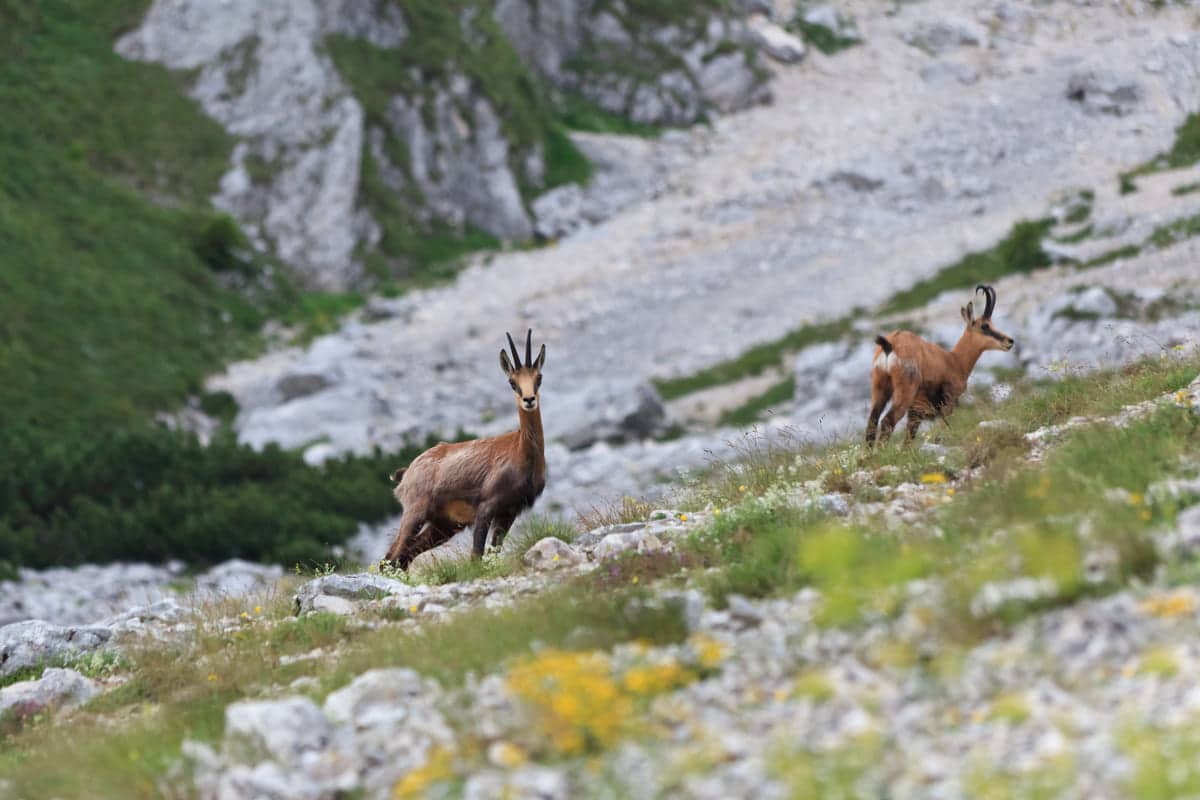
The Impact of Climate Change on Alpine Summer Wildlife
How Is Climate Change Affecting the Habitats of Alpine Wildlife in Summer?
Climate change is having a profound impact on the habitats of Alpine wildlife. Rising temperatures are causing glaciers to melt, leading to unstable soil and increased risk of landslides and flooding. These changes disrupt the natural habitats of many species, forcing them to adapt or relocate. The shifting climate also affects the availability of food and water, which can have cascading effects on the entire ecosystem.
What Species Are Most at Risk from Rising Temperatures and Changing Weather Patterns?
Several species in the Alps are particularly vulnerable to the effects of climate change. The Chamois, known for its agility in high altitudes, is experiencing habitat loss as snowlines retreat. The Marmot, which relies on specific hibernation patterns, faces challenges with unpredictable weather. Bears, emerging from hibernation earlier due to warmer temperatures, encounter food scarcity. The Ptarmigan, an endangered bird found near summits, is also at risk as its habitat shrinks.
How Can Visitors to the Alps Contribute to Minimising Their Environmental Impact?
Visitors to the Alps can play a role in minimising their environmental impact. Simple actions such as staying on marked trails, avoiding littering, and respecting wildlife can make a significant difference. Using public transportation or carpooling reduces carbon emissions. Supporting local conservation initiatives and being mindful of water and energy use while staying in the region also contribute to preserving the delicate Alpine ecosystem.
What Long-Term Conservation Strategies Are Being Implemented to Combat These Effects?
Long-term conservation strategies are essential to combat the effects of climate change on Alpine wildlife. Protected areas and national parks, such as Ecrins and Gran Paradiso, play a crucial role in preserving habitats. Reintroduction programmes for species like the Ibex and Bearded Vulture have shown success. Efforts to restore natural vegetation and manage water resources help maintain the ecological balance. Additionally, ongoing research and monitoring provide valuable data to inform future conservation actions.
Human-Wildlife Interactions: Coexistence and Conflict
What Challenges Arise from Increased Human Activity in the Alps During Summer?
Increased human activity in the Alps during the summer months brings several challenges. The influx of trekkers and tourists can lead to habitat disruption, noise pollution, and littering, all of which can disturb the local wildlife. Overcrowded trails and popular spots can also cause stress to animals, making them more likely to avoid these areas.
How Do Wildlife Adapt to the Presence of Trekkers and Tourists?
Wildlife in the Alps have developed various strategies to adapt to the presence of humans. Some species, like the Chamois and Ibex, tend to retreat to higher altitudes or more remote areas to avoid human contact. Marmots, known for their sociable nature, may become more cautious and limit their activity to early mornings and late evenings when fewer people are around. Predatory birds like the Golden Eagle and Bearded Vulture often nest in inaccessible cliffs, reducing the likelihood of disturbance.
What Measures Are in Place to Manage Human-Wildlife Conflicts?
Several measures are in place to manage human-wildlife conflicts in the Alps. National parks and protected areas have established guidelines to minimise human impact on wildlife. These include designated trails, restricted zones, and educational programmes to inform visitors about responsible behaviour. Additionally, local authorities implement herd management and coexistence strategies to address issues such as crop damage by wild boar and livestock predation by wolves.
How Can Visitors Ensure Respectful and Safe Encounters with Wildlife?
Visitors can ensure respectful and safe encounters with wildlife by following a few simple guidelines. Always maintain a safe distance from animals and avoid feeding them, as this can alter their natural behaviour. Stick to marked trails to minimise habitat disruption and reduce the risk of getting lost. Carrying binoculars can enhance your wildlife viewing experience without the need to get too close. Lastly, be aware of your surroundings and make noise to alert animals of your presence, reducing the chance of startling them.
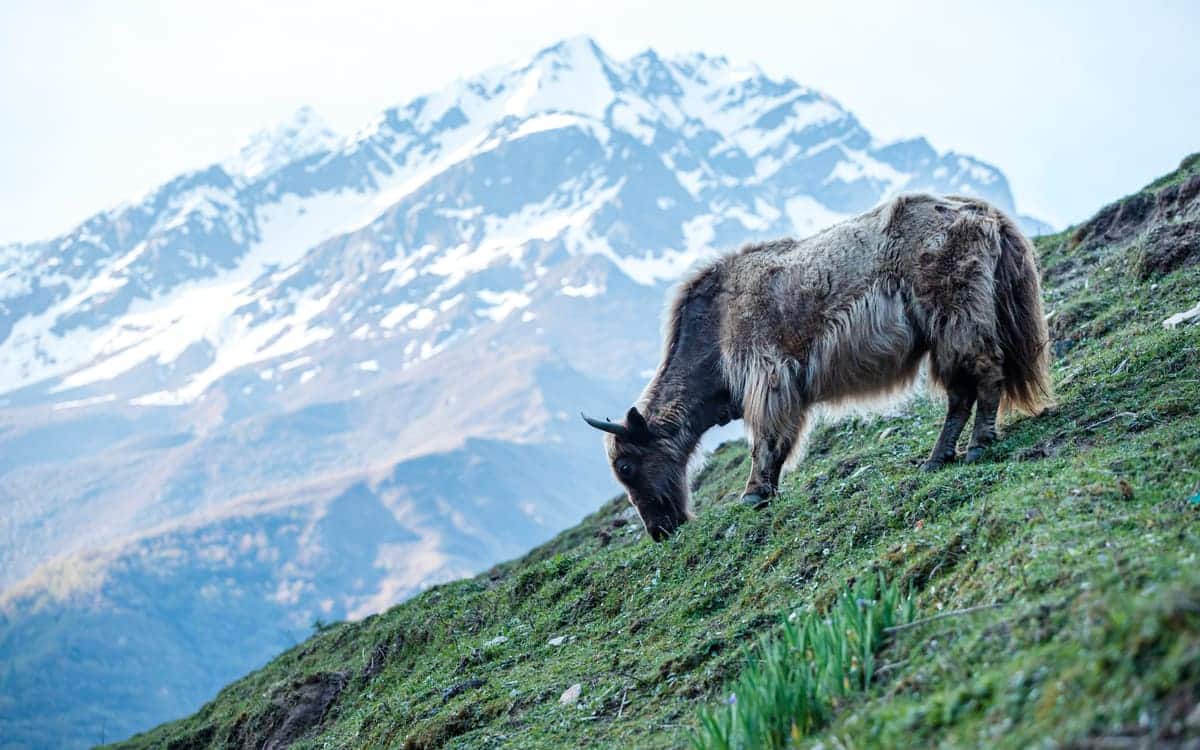
Alpine Flora: Supporting Wildlife and Ecosystems
How Do the Diverse Plant Species of the Alps Support Summer Wildlife?
The Alps are home to a rich variety of plant species that play a crucial role in supporting wildlife during the summer months. Alpine meadows burst into life with wildflowers such as Edelweiss and Gentian, providing essential food sources for insects and herbivores. These plants offer nectar and pollen for pollinators like bees and butterflies, which in turn support the food chain by feeding birds and small mammals.
What Role Do Alpine Flowers Play in the Diet and Habitat of Various Animals?
Alpine flowers are more than just a visual delight; they are vital to the diet and habitat of many animals. For instance, the Bilberries found in the Alps are a key food source for birds and mammals, including the Chamois and Marmot. The dense vegetation also offers shelter and nesting sites for various species, creating a thriving ecosystem where flora and fauna coexist harmoniously.
How Are Changing Climates Affecting Alpine Flora and, Consequently, the Wildlife?
Climate change is significantly impacting Alpine flora, with rising temperatures and altered precipitation patterns leading to shifts in plant distribution. Some species are moving to higher altitudes in search of cooler conditions, while others face the risk of extinction. These changes affect the entire ecosystem, as animals that rely on specific plants for food and habitat must also adapt or relocate. The reduction in plant diversity can lead to a decline in insect populations, which has a ripple effect on birds and other wildlife.
What Efforts Are Being Made to Preserve the Unique Botanical Diversity of the Alps?
Efforts to preserve the botanical diversity of the Alps are multifaceted. Conservation programmes focus on protecting endangered plant species and restoring natural habitats. National parks and reserves, such as Ecrins and Gran Paradiso, play a pivotal role in these initiatives. Additionally, research and monitoring projects help track the health of Alpine flora and inform conservation strategies. Public awareness campaigns and ecological education also encourage responsible behaviour among visitors, ensuring that the natural beauty and biodiversity of the Alps are preserved for future generations.
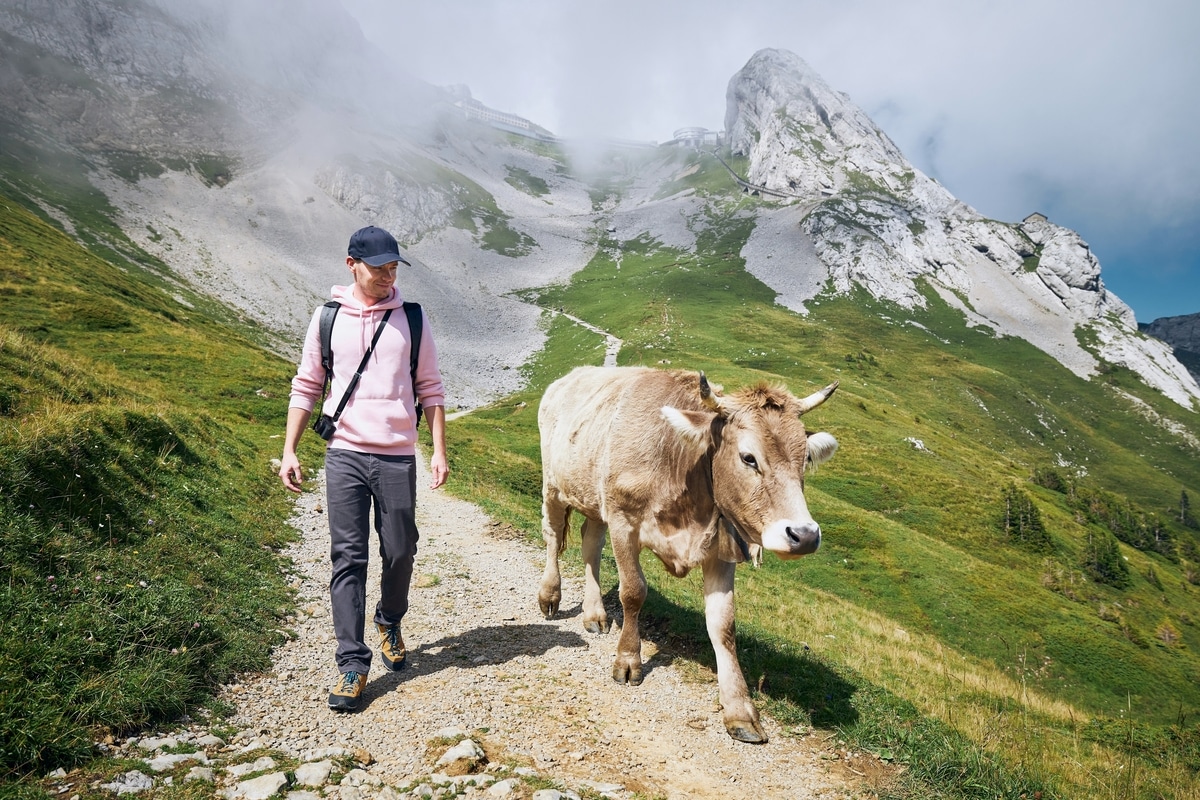
Responsible Trekking: Minimising Impact on Wildlife
What Are the Best Practices for Minimising Disturbance to Wildlife While Trekking?
When trekking in the Alps, it’s essential to minimise your impact on the local wildlife. Stick to marked trails to avoid trampling on delicate vegetation and disturbing animal habitats. Keep noise levels low to prevent startling animals, and always observe wildlife from a distance. Avoid feeding animals, as this can disrupt their natural foraging behaviours and make them dependent on human food.
How Can Trekkers Contribute to the Preservation of Natural Habitats?
Trekkers can play a significant role in preserving natural habitats by following a few simple guidelines. Carry out all trash, including biodegradable items, to prevent littering. Use biodegradable soap and avoid contaminating water sources. Support local conservation efforts by respecting protected areas and adhering to regulations. By being mindful of your actions, you help maintain the pristine condition of the Alpine environment.
What Are the Guidelines for Wildlife Photography and Observation in the Alps?
For those interested in wildlife photography, it’s important to follow ethical guidelines. Use a telephoto lens to capture images from a distance, ensuring you don’t disturb the animals. Avoid using flash, as it can startle wildlife. Be patient and allow animals to move naturally without interference. When observing wildlife, use binoculars to get a closer look without encroaching on their space. Always prioritise the well-being of the animals over getting the perfect shot.
How Do Local Regulations and Guidelines Support Sustainable Tourism and Wildlife Conservation?
Local regulations and guidelines are in place to support sustainable tourism and wildlife conservation in the Alps. National parks and protected areas have specific rules to minimise human impact, such as designated camping sites and restricted zones. Educational programmes inform visitors about the importance of conservation and responsible behaviour. By adhering to these regulations, trekkers contribute to the long-term preservation of the Alpine ecosystem, ensuring that future generations can enjoy its natural beauty.
Final Thoughts on Experiencing Alpine Wildlife in Summer
What Are the Key Takeaways for Trekkers and Wildlife Enthusiasts Visiting the Alps in Summer?
Visiting the Alps in summer offers a unique opportunity to witness a diverse array of wildlife in their natural habitats. From the agile Chamois to the majestic Golden Eagle, the Alps are teeming with life. The key takeaway is to approach your adventure with respect for the environment and the creatures that inhabit it. Observing wildlife from a distance, staying on marked trails, and avoiding feeding animals are essential practices to ensure a harmonious experience.
How Can Individuals Contribute to the Ongoing Conservation Efforts for Alpine Wildlife?
Contributing to conservation efforts can be as simple as following local guidelines and regulations. Supporting national parks and protected areas through entrance fees and donations helps fund vital conservation projects. Participating in citizen science initiatives, such as wildlife monitoring, can provide valuable data for researchers. By being mindful of your impact and supporting conservation initiatives, you play a part in preserving the Alpine ecosystem for future generations.
Why Is It Important to Maintain a Balance Between Enjoying and Preserving Natural Habitats?
Maintaining a balance between enjoyment and preservation is crucial for the sustainability of natural habitats. Over-tourism and irresponsible behaviour can lead to habitat destruction and stress on wildlife populations. By practising responsible tourism, you help ensure that the natural beauty and biodiversity of the Alps remain intact. This balance allows future visitors to enjoy the same breathtaking experiences while protecting the environment.
How Does Understanding and Respecting Alpine Wildlife Enhance the Overall Trekking Experience?
Understanding and respecting Alpine wildlife enriches your trekking experience by fostering a deeper connection with nature. Knowledge about the behaviours and habitats of different species adds a layer of appreciation to your journey. Respecting wildlife ensures that your encounters are safe and enjoyable for both you and the animals. This respectful approach not only enhances your personal experience but also contributes to the well-being of the ecosystem.
